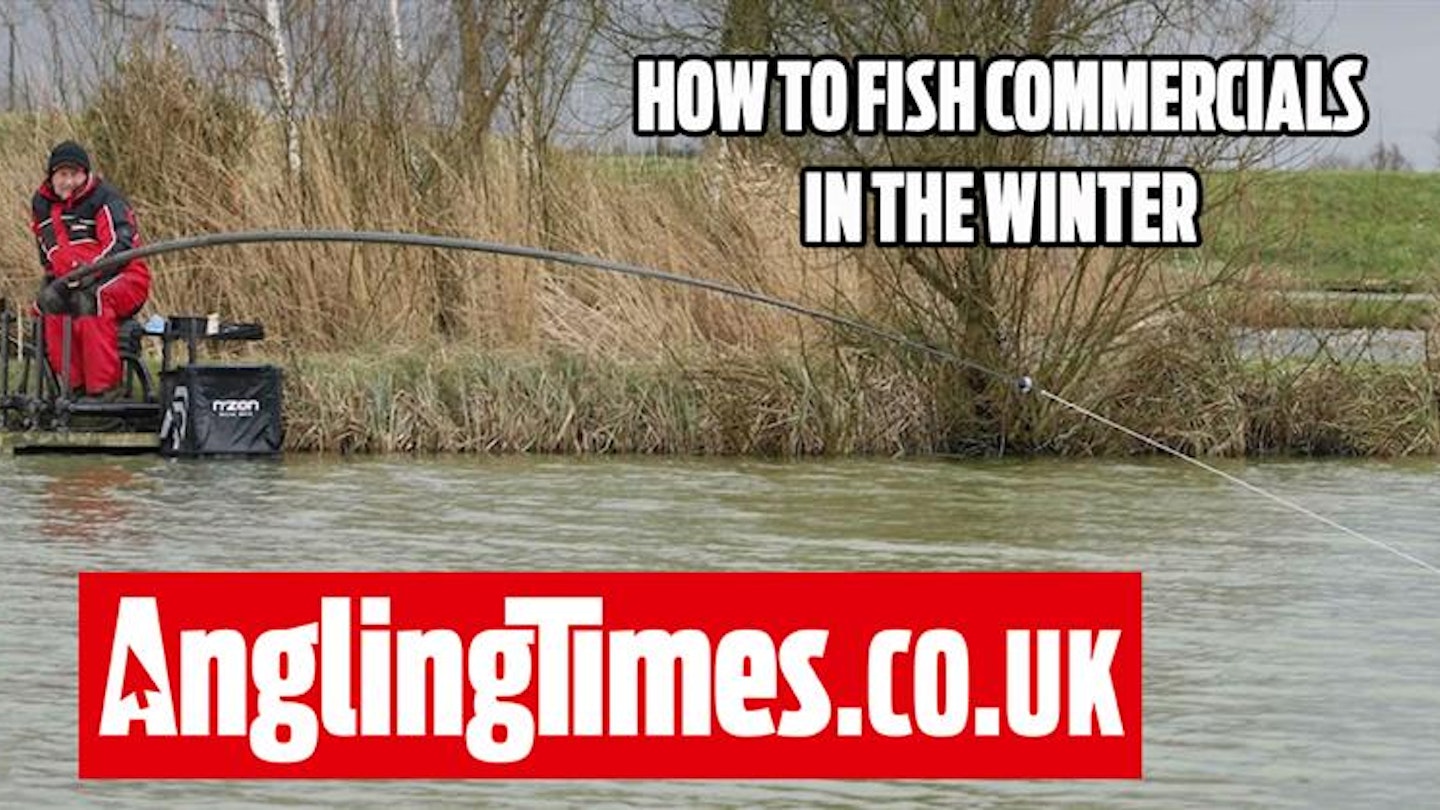Here’s our extensive fishing guide to help you keep on catching on a pole, waggler and feeder on commercial fisheries during the colder winter months.
So, whatever style of fishing you enjoy or species you prefer catching, taking a good look through this guide will ensure you know how best to target your local fishery. Full of tips and tactics to ensure you keep busy on the bank throughout November to April.
A SET OF THE BEST WINTER FISHING WATERPROOFS WILL KEEP YOU COMFORTABLE WHEN FISHING IN THE COLD WEATHER.
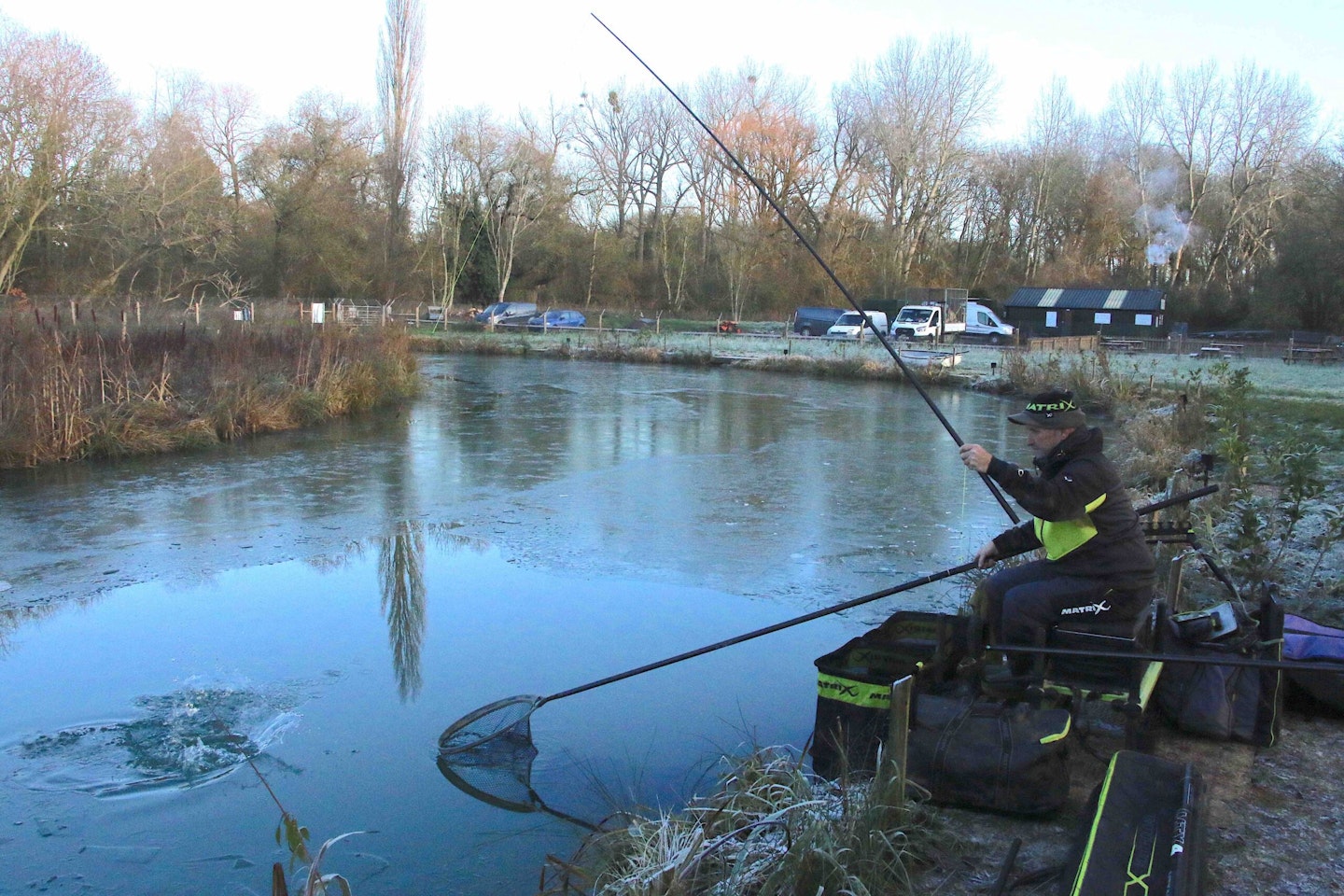
Choose the right venue
This is absolutely key to ensuring that you continue having productive sessions, there is nothing worse than sitting motionless for hours in damp and cold conditions!
Fish a commercial that is well stocked with lots of species so you will always have something to target depending on what is feeding. Also, choose somewhere that responds to how you enjoy fishing, it can be hard to get motivated to go fishing in the winter so at least go and catch fish on a method you enjoy using.
Picking the right swim
When you arrive at the water, ask the bailiff or the owner where the fish are being caught, they know the venue and they will put you on the fish, regardless of what you want to catch.
If there’s no-one to ask, then watercraft and previous experiences come into play. Watch the water closely to see any signs of life such as swirls, clouded water or bubbles. If you're fishing a snake lake, look for swims that are a bit wider with plenty of cover available as the fish will often hold up under dying reeds, trees and platforms. Checking the fisheries Facebook page can be useful too, paying close attention to match results to see where the fish are being caught.
Similarly, if you fish a venue where one bank gets more sunlight than the other, that is the side to target for more consistent action as the sunlight will help warm the water, even one degree of difference can be huge to fish.
MAKE EVERY FISH YOU HOOK COUNT THIS WINTER BY USING ONE OF THE BEST LANDING NETS.
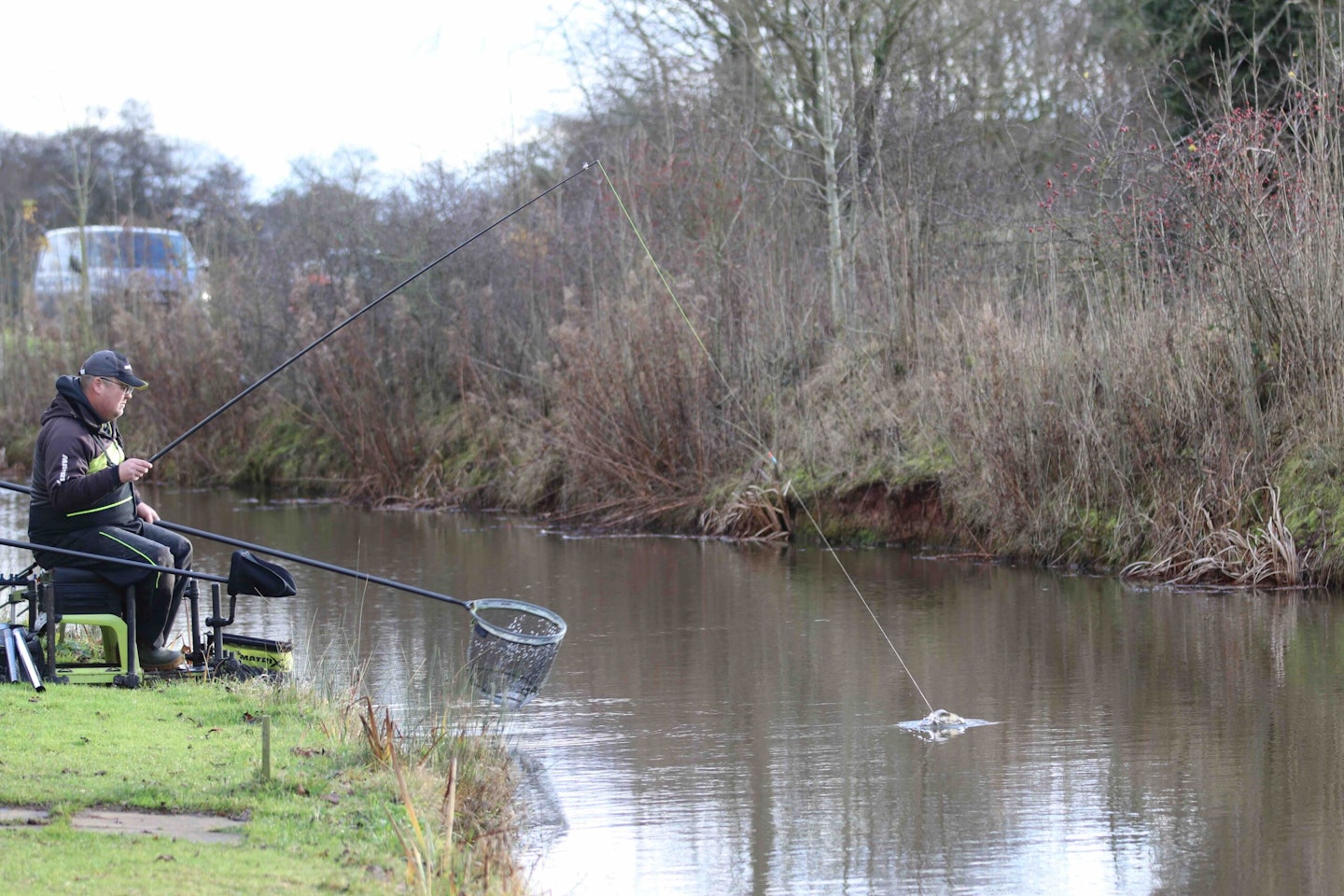
Watch the weather
The very best time to go to a commercial carp water during the winter is after a few days of settled and mild weather. That’s when the water temperature will have risen and the fish will have become a little more active. Note any direction of wind too. A southerly breeze is perfect as it brings with it milder temperatures and the promise of better sport.
On milder days, expect the carp to be moving but when the weather gets really cold only silvers and f1s are generally willing to feed. If there has been prolonged periods of cold weather the fish will naturally hold up in the deeper areas but don't be put off by fishing in shallow water, especially when it is sunny as the fish will migrate to these areas as the water warms up quicker.
Fining down
You may well have heard this phrase mentioned a lot when anglers talk of winter fishing. Basically it means whatever tackle you used in summer, reduce it for winter fishing. As the water clears on commercials, fish can become wary of thicker lines and big hooks and taking a more finesse approach always gets more bites.
Tailor your approach to what you want to catch, scaling down appropriately so that you don't risk being snapped off by larger fish, finding a balance is key. As a rough guide generally hook sizes from 16-20, with line diameter for hooklengths around 0.10-0.14 will be adequate for most species in winter commercials. Obviously this will change if your commercial is full of huge carp or just small silvers but winter will always surprise you with the big fish you can land on very light, balanced gear.
AREN'T SURE WHAT LINE TO USE IN WINTER? CHECK OUT OUR BUYERS GUIDE FOR ALL THE BEST MAINLINES.
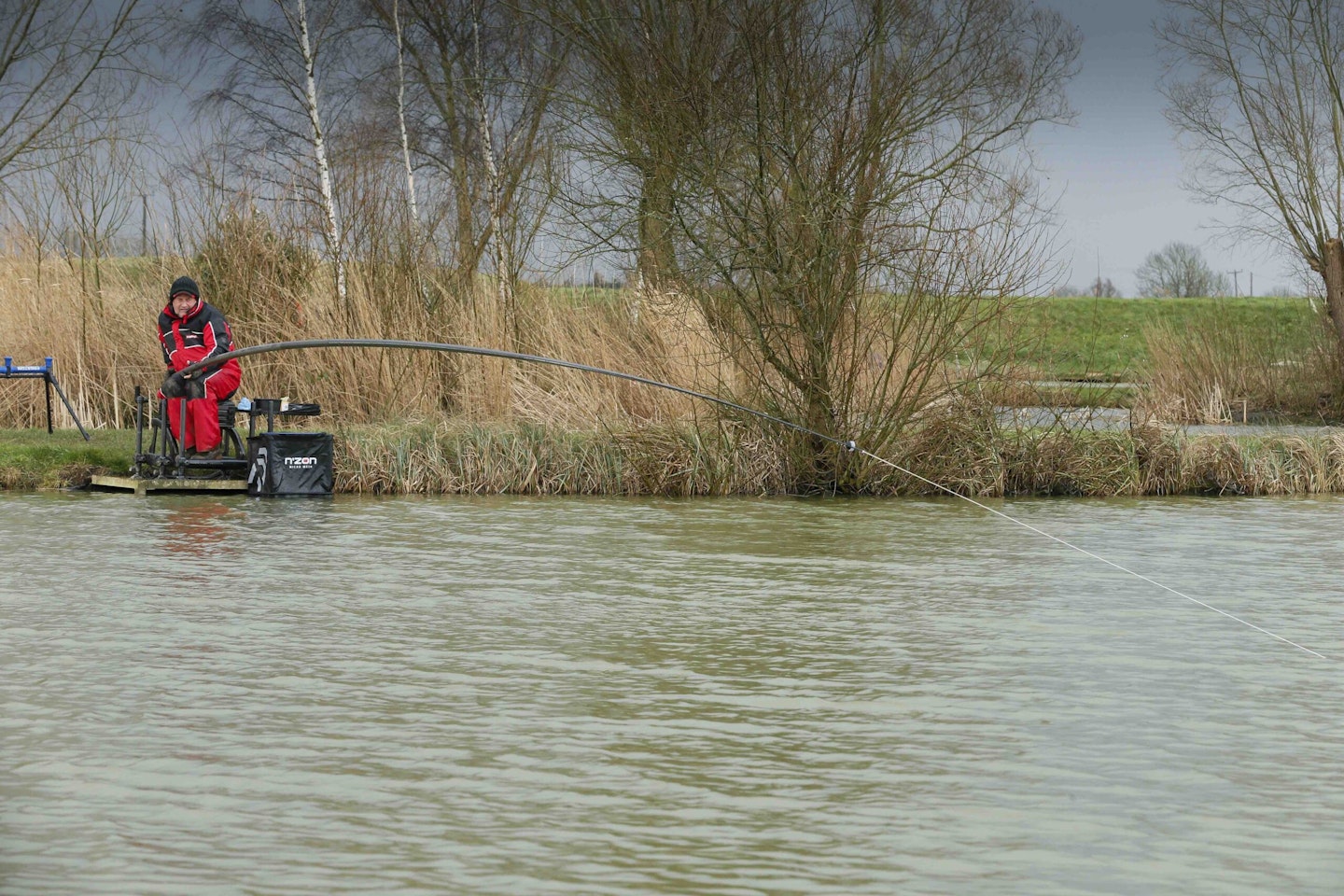
Start on the bottom
If you are float fishing, always start your session fishing with your bait set on the bottom as the fish are far more likely to be swimming around close to the lakebed. It is also the best way to tell what depth the fish are at, if you begin to miss bites or get liners, it indicates the fish are sitting higher in the water column and it might be time to find shallower water to fish in, or fish shallow.
Reduce the feed
Tentative feeding is key in winter and fishing for one bite a time is usually the best approach. Just a pinch of maggots, a few pellets, or three grains of sweetcorn is all it will take when you reach for your catapultor pole pot. It is easy to overcook your swim so ease your way in, let the fish tell you what to do and how much to feed.
A PAIR OF THE BEST FISHING BOOTS WILL HELP PREVENT YOUR FEET GETTING COLD SO YOU CAN CONCENTRATE ON FISHING.
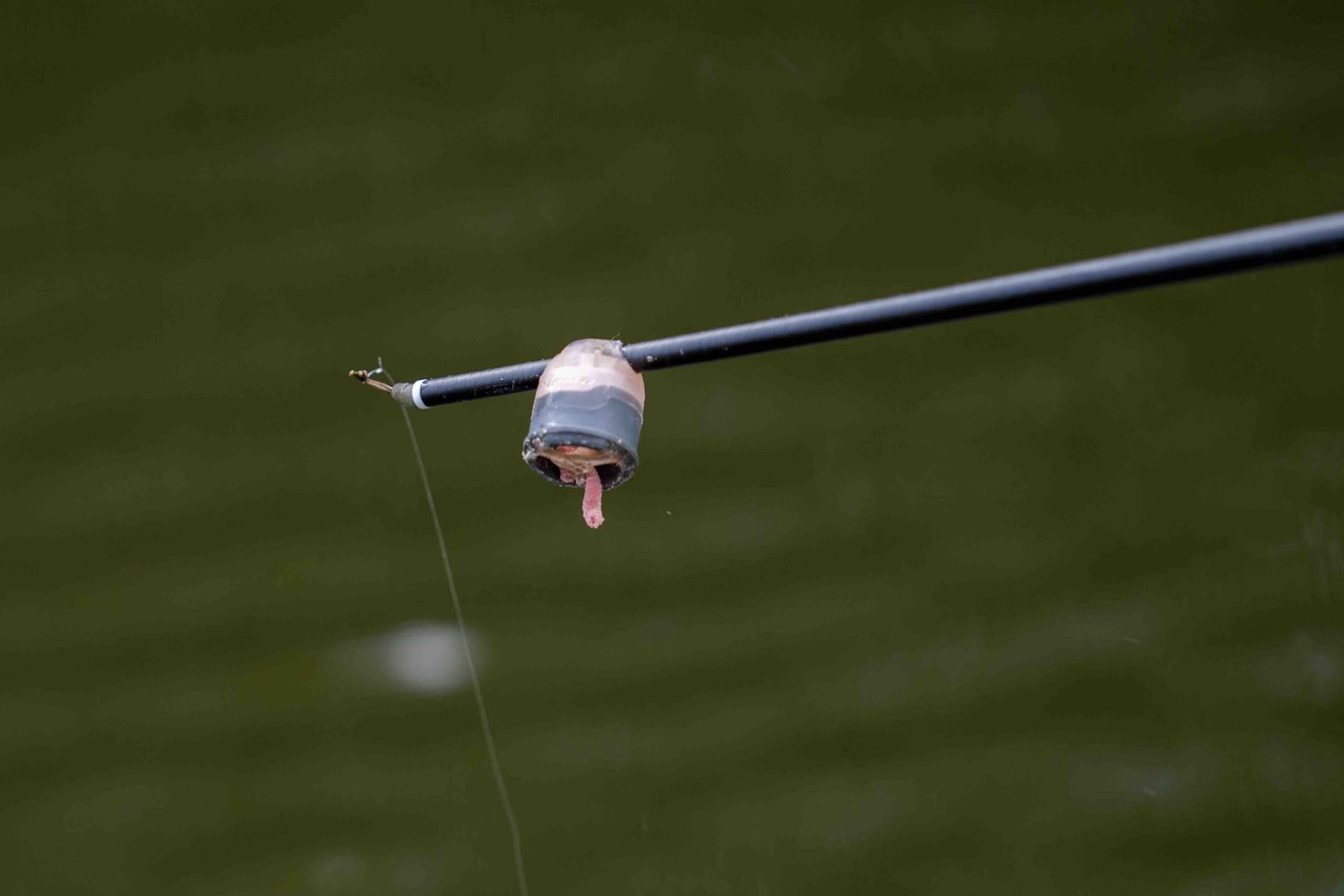
Search the water
Finding the fish is the hardest part of winter commercial fishing. Some areas of the lake can be completely devoid of fish and it can be hard to believe you're fishing the same water as you were in summer.
Don't be afraid to search you swim, if you're on a snake lake, dobbing can be a fantastic method for finding what depth and where the fish are happy to be. Similarly, chucking the bomb and bread out and looking for liners will give you an idea where the fish are located.
USING A SHORT FEEDER ROD IS PERFECT FOR WINTER BOMB/FEEDER FISHING ON COMMERCIALS.
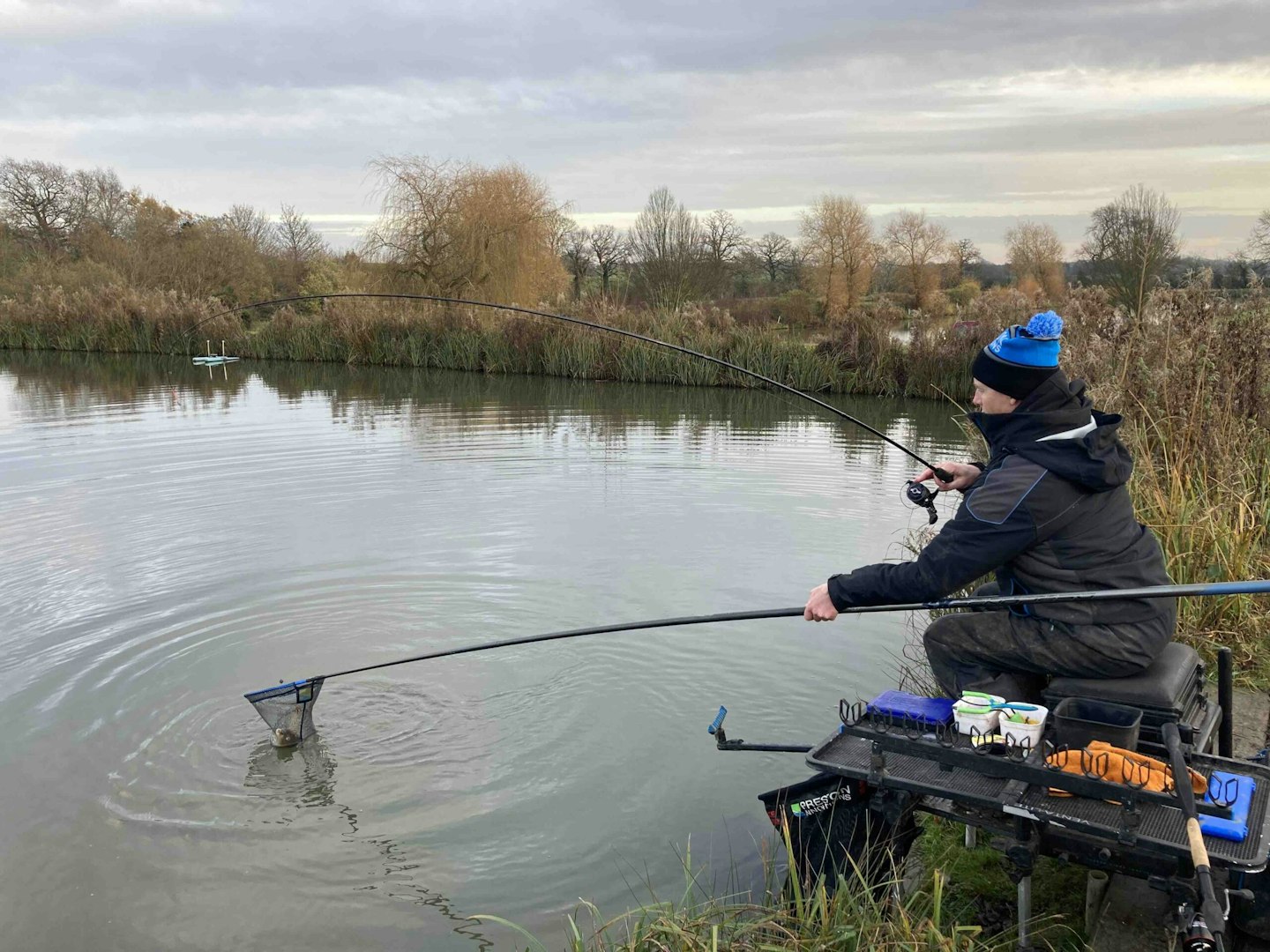
The baits to take
Less is more when it comes to commercial fishing when it’s cold. Basically, you won’t need to feed much bait, and below is a list of the typical feed and hookbaits that really work on a stillwater in winter and why.
Sweetcorn
This sweet-scented bait is brilliant in the cold and fish just seem to love it, plus the bright colour can be easily seen by fish. Corn is really versatile too, you can use it for silvers and carp whilst using it on a bomb, waggler or pole. Always keep a tin in your bag, it can often bail you out!
Maggots
Maggots are a staple at any time if year and a bait that will always get you a bite. You can use them dead or alive, with red maggots generally favoured in winter as the fish seem less wary of them as the water clears. The maggot feeder can be a devastating way of catching species like carp and f1s on commercials.

Fluoro pinkies
These brightly coloured, mid-sized maggots are brilliant when it’s cold as they stand out well in the clear water, they don’t fill the fish up and all commercial fishery species are fond of them. Often tipping a red maggot off with a fluoro pinkie can tempt F1's when nothing else can!
Worms
One of the very best attractors during cold weather is the humble chopped worms, with Dendrobaenas being the most popular. They emit lots of attractive juices and the worms are large enough to provide you with a multitude of different sized pieces to use on the hook. Worms are great for silvers, however you will find worms don't work quite as well when it's very cold.
Bread
Bread is the king of winter commercial fishing, and when the going gets tough, bread will often get you a bite. Dobbing has become an integral part of match fishing in the winter now and every species will eat it, F1s, carp, roach, bream they love the stuff. It can also be successfully used when popped up when using a bomb.
ACCESSORIES LIKE BREAD PUNCHES MAKE LIFE A LOT EASIER, CHECK OUT THE BEST FISHING GADGETSFOR MORE TACKLE LIKE THIS.
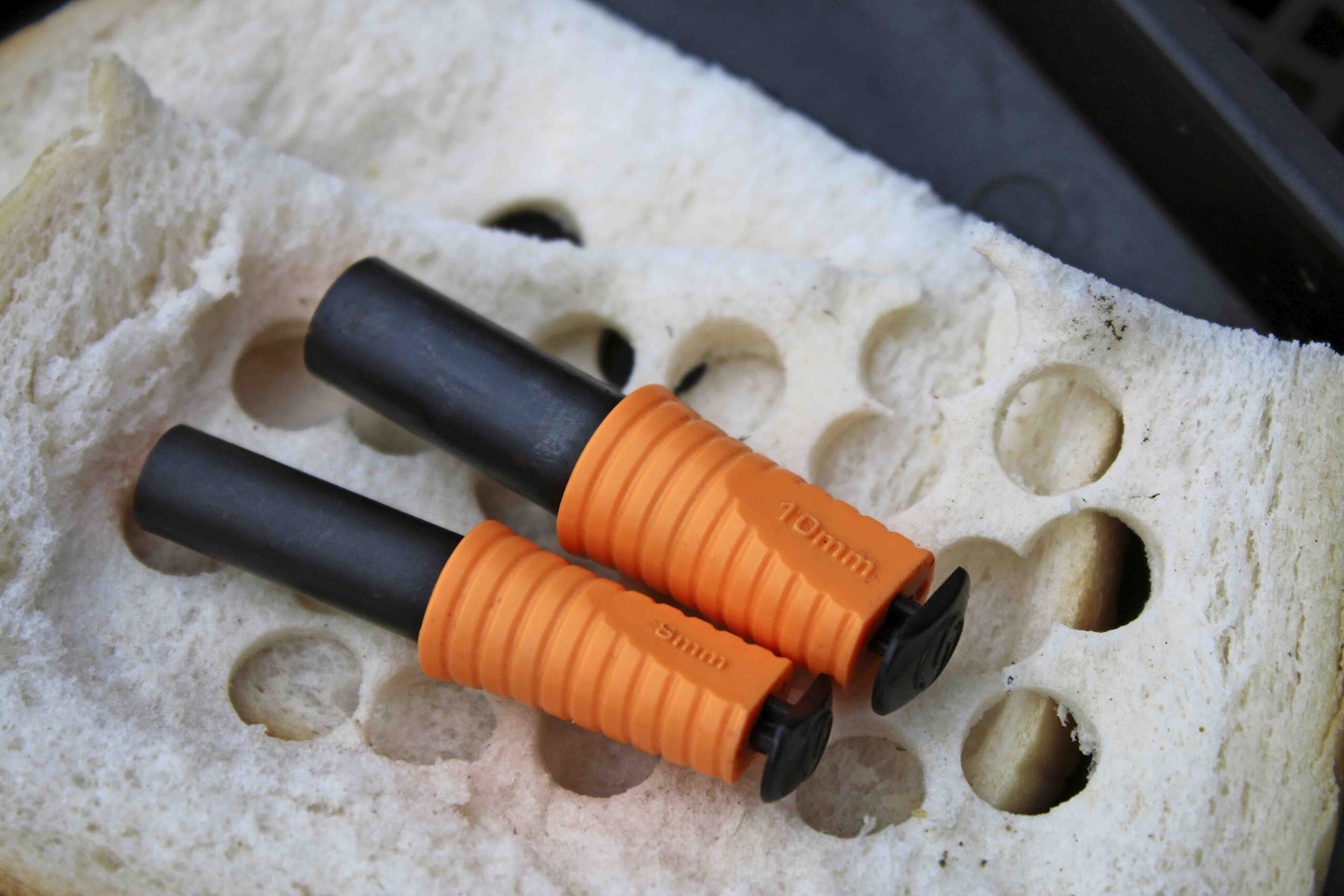
Casters
Casters are well known fish-catchers when it’s cold, especially if you're fishing for species like skimmers and roach. Casters often allow you to be a little more aggressive with your feeding and are particularly good at drawing fish in thanks to the noise they make when they hit the water. They also seem to pick the better fish out of the shoal too.
Meat
Whilst often considered a summer bait, meat can be particularly good in the winter and is great if you want to target fish like carp and not worry so much about nuisance fish. Be cautious with feeding meat in any quantity though, as the high fat content is hard for the fish to digest so they won't want to eat loads of it. Dying it yellow and using it on a bomb or waggler can be deadly when it's really hard.
Pellets
Pellets are a commercial fishery staple and as the fish are so used to seeing them, they will seldom reject a pellet. Unlike summer where you can pile pellets in, winter requires a more cautious approach, often feeding enough to get one bite is the best way.
Smaller pellets reign supreme, with 2mm, 4mm and 6mm the best. It always pays to soften the pelletstoo as this makes them release their attraction better in cold water and the fish can eat and digest them easier too.
YOU CAN BOOST THE ATTRACTION OF YOUR BAITS BY ADDING LIQUIDS AND FLAVOURINGS.
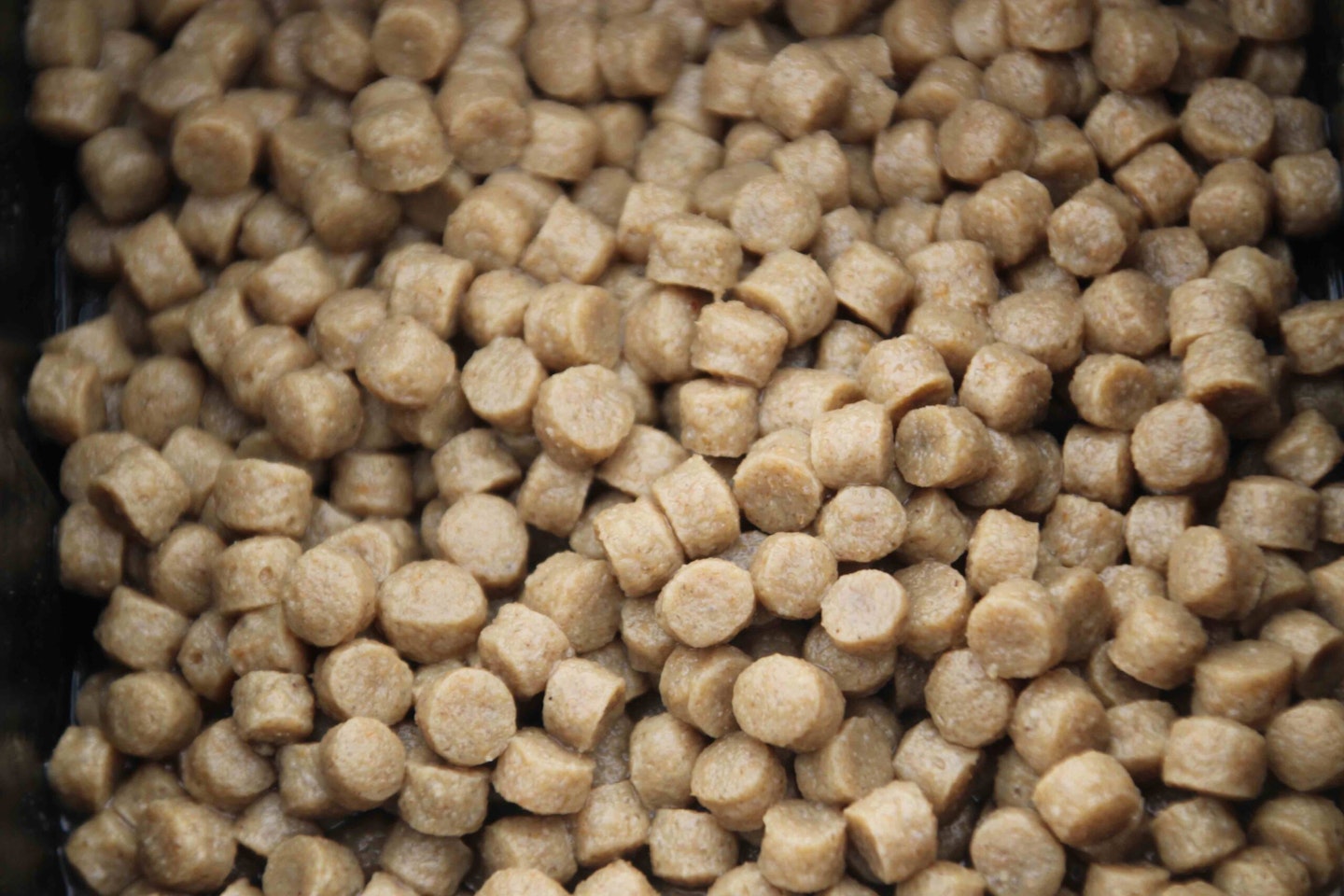
This page is a free example of the amazing content Angling Times Members get every single week. Becoming an Angling Times Member gives you access to award-winning magazine content, member rewards, our back issue archives, bonus content and more! Join our fishing community and find out more today!
